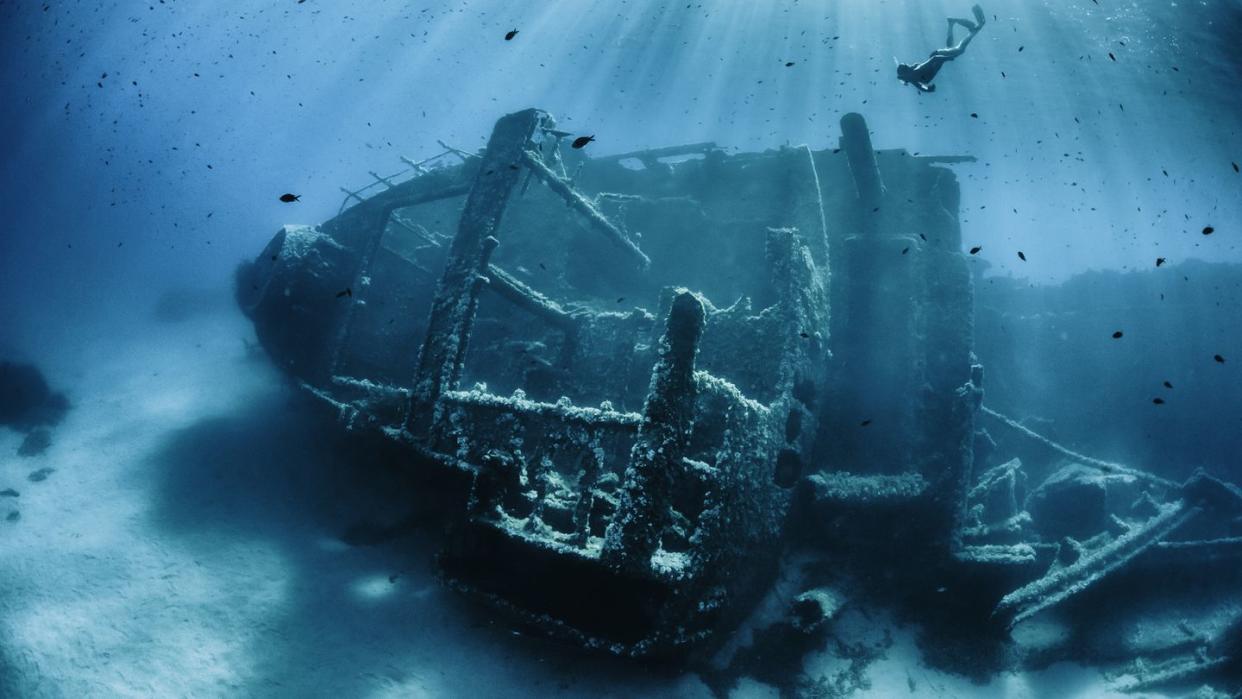Divers Unraveled an Amazing Mystery From the Deep: A Sunken 18th-Century Warship

A sunken warship built in the 1600s and discovered nearly 30 years ago off the shore of the Florida Keys has been identified as a British wreck from 1742.
The HMS Tyger was on patrol in the War of Jenkins’ Ear between Britain and Spain.
Cannons tossed overboard near where the ship ran aground on the reefs of Dry Tortugas served as vital clues.
Even tossing cannons into the ocean provided no help in dislodging the British warship to HMS Tyger from its perch and back into deeper waters, after it ran aground on a coral reef near Garden Key, Florida on Jan. 13, 1742. Those same cannons, though, did help archeologists definitively identify the wreck, which was first discovered nearly 30 years ago.
The ship, which was on patrol as part of the War of Jenkins’ Ear between Britain and Spain, is 130 feet in length and represented 704 tons of patrol power, with 50 cannons scattered across three decks. The 300-plus men on board sailed near Cuba and Jamaica asa show of force to the Spanish. That force lost its momentum when it hit the coral reefs of the Florida Keys, leading the crew to toss anchors and cannons overboard to no avail and forcing them to abandon the ship toward Garden Key, where they built shelter as the island’s first fortifications.
The history of the HMS Tyger and Garden Key has recently come back to life thanks to a positive identification of the ship. “Archeological finds are exciting, but connecting those finds to the historical record helps us tell the stories of the people that came before us and the events they experienced,” James Crutchfield, Dry Tortugas National Park manager, said in a statement. “This particular story is one of perseverance and survival.”
The ship was initially discovered in 1993, but archeologists from the park, the Submerged Resources Center, and the Southeast Archeological Center used new evidence—found when the site was surveyed in 2021—to gain more details and make a positive identification of the ship. The team found five cannons roughly 500 yards from the main wreck, and buried in the margins of old logbooks was a reference that described how the crew “lightened her forward” after initially running aground, briefly refloating the vessel before finding further trouble.
Archeologists determined the cannons to be British six- and nine-pound cannons linked to the HMS Tyger. The findings were published in the International Journal of Nautical Archaeology.
As governed by international treaty, the HMS Tyger and related artifacts are sovereign property of the British government, and the site is protected under cultural resource laws.
“This discovery highlights the importance of preservation in place as future generations of archeologists, armed with more advanced technologies and research tools, are able to reexamine sites and make new discoveries,” Josh Marano, the maritime archeologist who led the team making the discovery, said in a statement.
Believed to have first been built in 1647, the HMS Tyger was reconfigured multiple times before the 1741 iteration carried six 6-pounder guns on the quarter deck, 22 9-pounders on the upper deck, and 22 18-pounders on the gun deck, according to the National Park Service.
Those heavy guns were unloaded when the ship ran aground in 1742 in an effort to dislodge the ship. The crew moved everything else to the back of the ship. Historical records say poor weather helped worsen the situation, and the crew was ordered to abandon ship.
Archeologists believe the HMS Tyger was the first of three British warships to sink off the Florida Keys. The HMS Fowey and HMS Looe wreck sites were previously located, but the HMS Tyger location had remained a mystery.
The 300 members of the crew were able to navigate the shallow waters to the nearby Garden Key, spending 66 days marooned there. The National Park Service stated the men crafted the first fortifications on the island, more than 100 years before Fort Jefferson took shape.
The crew was eager to leave the heat, mosquitoes, and lack of water, attempting to escape the deserted island by trying to salvage pieces of the wrecked ship and build new vessels. The crew even attempted an attack on a Spanish vessel, according to historical records. That attempt failed, and the crew decided to burn the HMS Tyger remains so the Spanish didn’t capture the guns.
A successful escape from Garden Key required the surviving men to build makeshift vessels and navigate a 700-mile journey to Port Royal, Jamaica.
You Might Also Like

 Yahoo Movies
Yahoo Movies 
